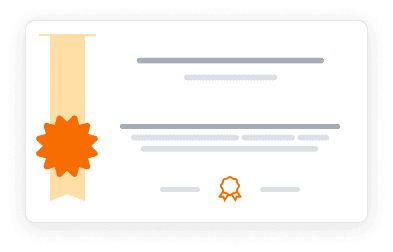This course is part of Natural Disaster and Climate Change Risk Assessment.
This course cannot be purchased separately - to access the complete learning experience, graded assignments, and earn certificates, you'll need to enroll in the full Natural Disaster and Climate Change Risk Assessment Specialization program. You can audit this specific course for free to explore the content, which includes access to course materials and lectures. This allows you to learn at your own pace without any financial commitment.
Instructors:
English
What you'll learn
Identify key aspects of qualitative and quantitative disaster risk analysis
Apply risk assessment methodologies to infrastructure projects
Use specialized software tools for risk analysis
Evaluate infrastructure vulnerability to natural disasters
Develop comprehensive risk management strategies
Skills you'll gain
This course includes:
1 Hours PreRecorded video
10 assignments
Access on Mobile, Tablet, Desktop
FullTime access
Shareable certificate
Get a Completion Certificate
Share your certificate with prospective employers and your professional network on LinkedIn.
Created by
Provided by

Top companies offer this course to their employees
Top companies provide this course to enhance their employees' skills, ensuring they excel in handling complex projects and drive organizational success.





There are 2 modules in this course
This comprehensive course explores both qualitative and quantitative methodologies for analyzing natural disaster risks in infrastructure projects. Students learn to identify key aspects of risk analysis, apply various methodologies and tools, and conduct practical analyses using specialized software. The course covers failure mode identification, fault trees, event trees, and system response analysis, with a focus on real-world applications through case studies. Special emphasis is placed on infrastructure resilience and climate change considerations.
Week 1
Module 1 · 6 Hours to complete
Week 2
Module 2 · 7 Hours to complete
Fee Structure
Individual course purchase is not available - to enroll in this course with a certificate, you need to purchase the complete Professional Certificate Course. For enrollment and detailed fee structure, visit the following: Natural Disaster and Climate Change Risk Assessment
Instructors
Head of the IDB's Corporate and Operational Learning Group
A Colombian national, she holds a Master's Degree in Finance from the Universidad de los Andes and a certification in Project Management from the Project Management Institute. With over 18 years of experience, she has worked across the private, public, and development sectors. Her primary areas of expertise include implementing complex economic and social development projects, as well as designing and executing learning programs centered on project management.
Senior Specialist in Disaster Risk Management at the Inter-American Development Bank
Sergio Lacambra is a Senior Specialist in Disaster Risk Management (DRM) at the Inter-American Development Bank (IDB), bringing over 25 years of professional experience in Latin America and the Caribbean. He has played a pivotal role as team leader for numerous policy reform and investment loans across countries such as Peru, Colombia, Panama, and Bolivia, while overseeing contingent credit facilities for natural disasters in Peru, Panama, Suriname, and Argentina. Currently, he coordinates the disaster risk management cluster within the IDB's Environment, Rural Development, and Disaster Risk Management Division. Lacambra was instrumental in designing the Index of Governance and Public Policy in Disaster Risk Management (iGOPP), which has been implemented across 26 borrowing member countries of the IDB. Additionally, he co-authored the disaster risk classification and analysis methodology used for infrastructure projects to ensure resilience against disasters. Prior to his tenure at the IDB, he managed humanitarian aid and disaster preparedness operations funded by the European Union in Central and South America. Lacambra holds a Master's degree in Economics from the University of London and has a solid foundation in economic principles that inform his work in disaster risk management and resilience strategies.
Testimonials
Testimonials and success stories are a testament to the quality of this program and its impact on your career and learning journey. Be the first to help others make an informed decision by sharing your review of the course.
Frequently asked questions
Below are some of the most commonly asked questions about this course. We aim to provide clear and concise answers to help you better understand the course content, structure, and any other relevant information. If you have any additional questions or if your question is not listed here, please don't hesitate to reach out to our support team for further assistance.





